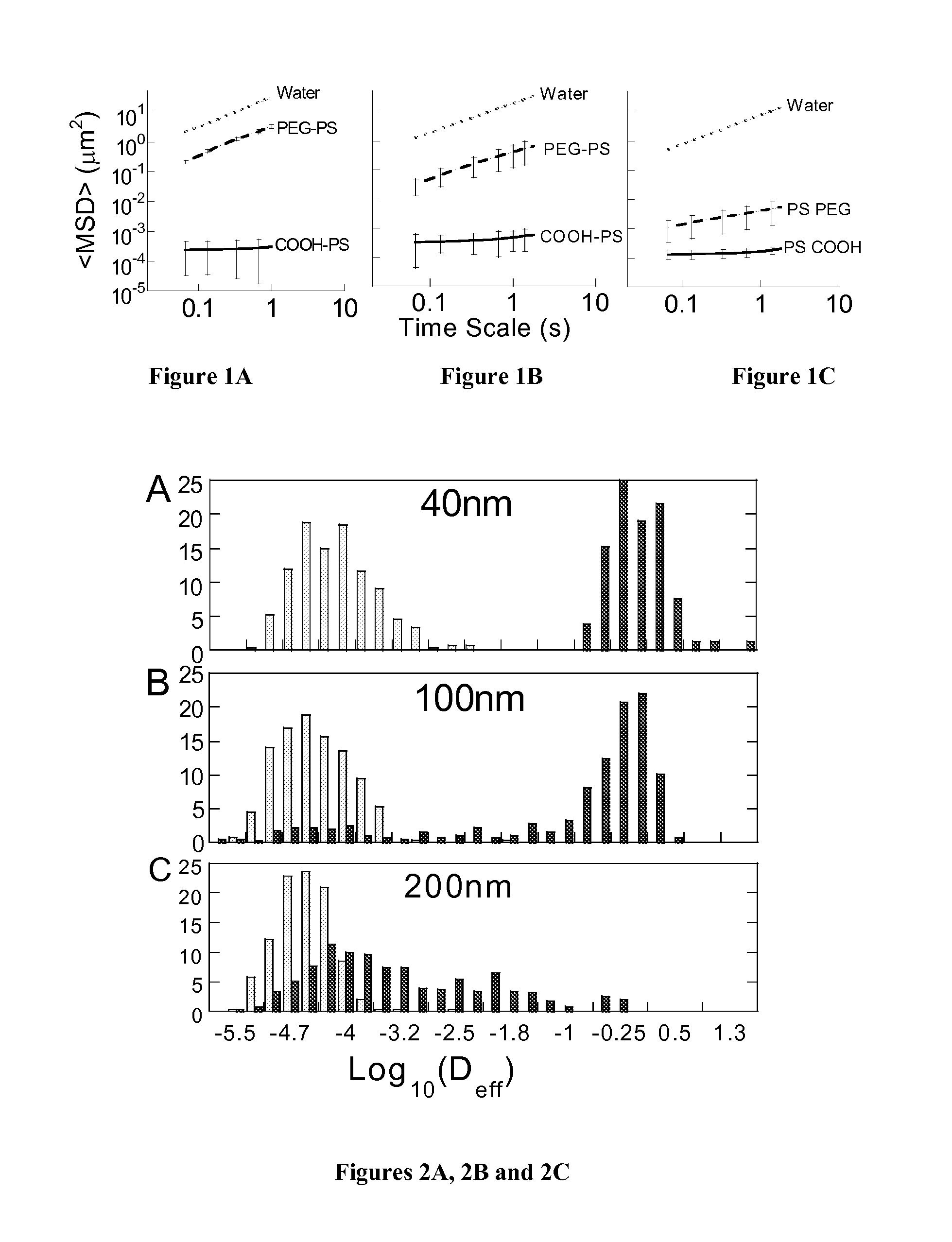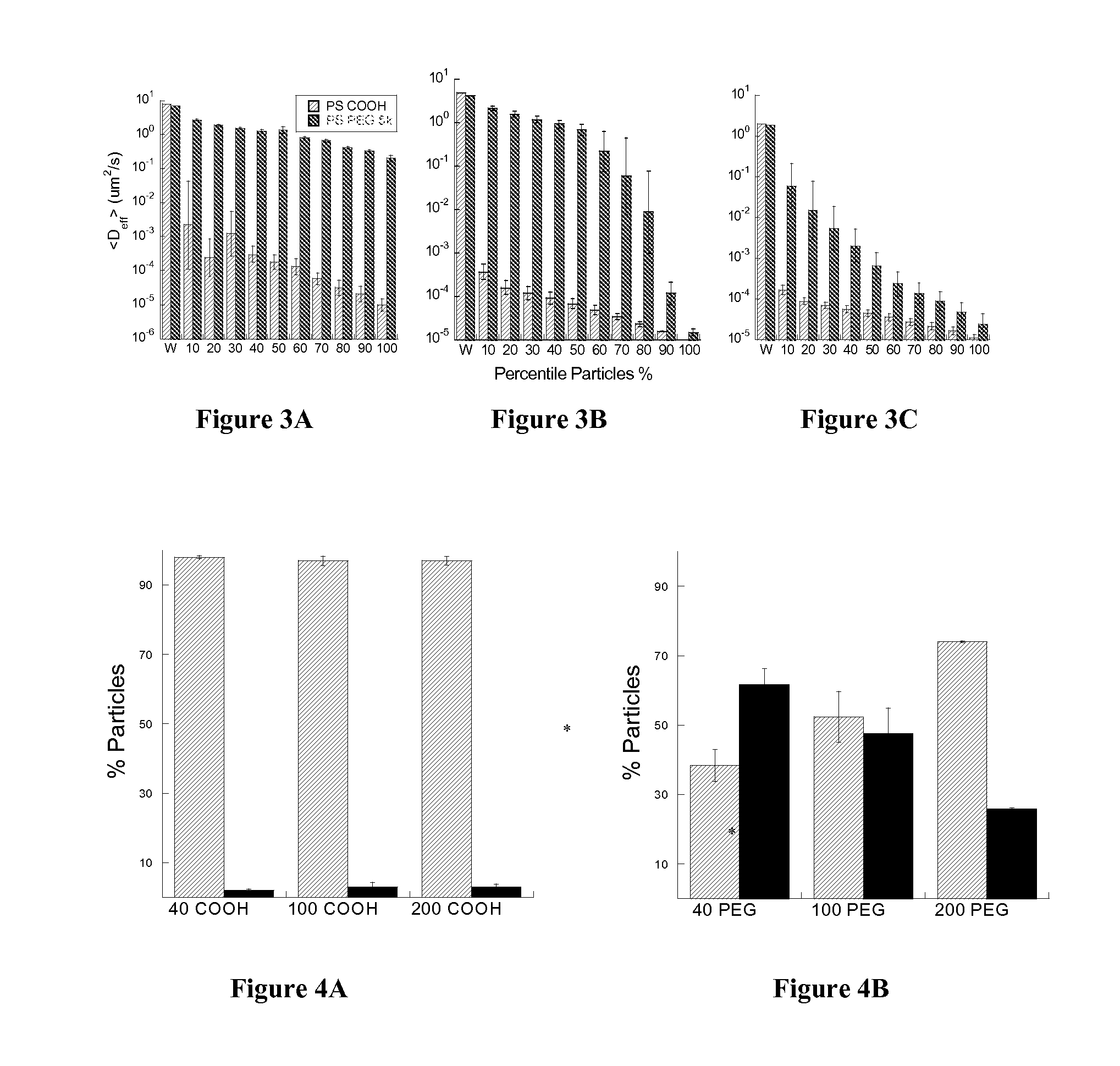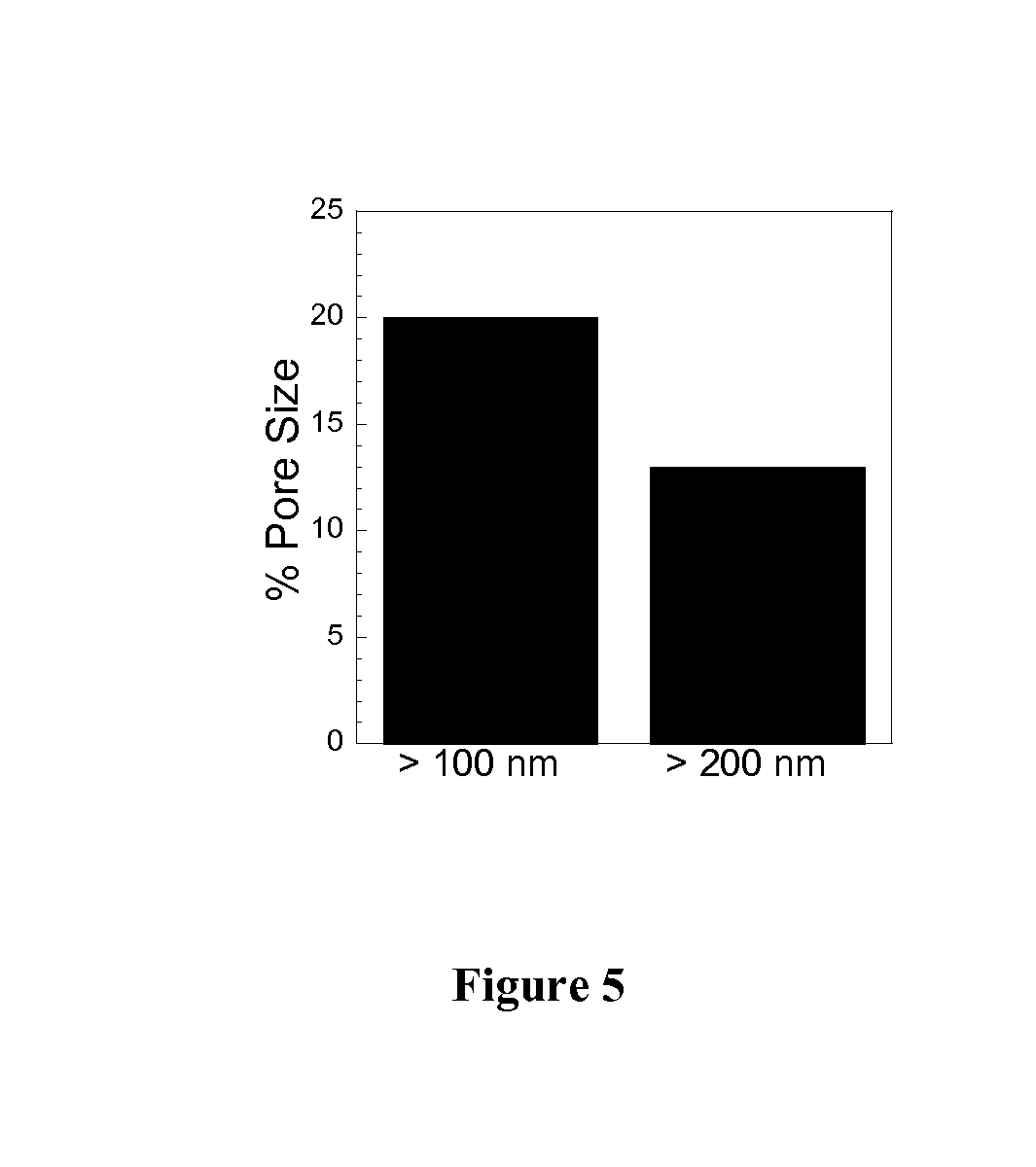Rapid Diffusion of Large Polymeric Nanoparticles in the Mammalian Brain
a polymer nanoparticle and brain technology, applied in the field of drug delivery, can solve the problems of virus carrying therapeutic genes, complex ecs, and inability to efficiently penetrate many particulate drug delivery systems, and achieve the effects of improving drug and gene delivery, improving drug loading efficiency, and increasing drug payload
- Summary
- Abstract
- Description
- Claims
- Application Information
AI Technical Summary
Benefits of technology
Problems solved by technology
Method used
Image
Examples
example 1
[0120]Materials and Methods
[0121]Brain Tissue Preparation
[0122]All experiments were carried out at Johns Hopkins University School of Medicine in accordance with National Institutes of Health guidelines and local Institutional Animal Care and Use Committee regulations. Brain tissue slices were prepared from 130-160 g female Sprague-Dawley rats. Animals were anesthetized with ketamine-xylazine and then administered an intracardiac injection of Euthanosol. After euthanasia, the brain was rapidly removed and immersed in chilled artificial cerebrospinal fluid (ACSF, Harvard Apparatus) supplemented with 10% glucose. Coronal slices were prepared using a rodent brain slice matrix kit (Zivic Instruments, Pittsburgh, Pa.). The matrix and razor blades were washed with 0.9% normal saline and placed on ice prior to inserting the excised rat brain. Placement of the brain and sectioning of the brain was carried out based on instrument instructions such that 1 mm thick slices were obtained. Slices...
example 2
Determination of Size and Effect of Charge on Transport of Nanoparticles through Brain Tissue
[0152]Materials and Methods
[0153]Nanoparticle Preparation and Characterization
[0154]Forty- to 200-nm red fluorescent carboxyl modified polystyrene particles (Molecular Probes, Eugene OR) were covalently modified with methoxy-PEG-amine (molecular mass 5kDa; Creative PEG Works, Winston-Salem, N.C.) by carboxyl amine reaction. Briefly, 100 μL of 2% polystyrene particle suspension were washed and resuspended to 4-fold dilution in ultrapure water. An excess of MeO-PEG5000-NH2 was added to the particle suspension in a 1.5 mL Eppendorf tube and mixed to dissolve the PEG. Sulfo-NHS (Sigma) was added to each tube, and 200 mM borate buffer, pH 8.2, was added to a 4-fold dilution of the starting volume. The pH of each reaction tube was adjusted to pH 7.80, and then EDC was added to a concentration of 6.4 mM to each tube. Particle suspensions were placed on a rotary incubator for 4 hours and then ultrac...
PUM
| Property | Measurement | Unit |
|---|---|---|
| diameter | aaaaa | aaaaa |
| diameter | aaaaa | aaaaa |
| particle size | aaaaa | aaaaa |
Abstract
Description
Claims
Application Information
 Login to View More
Login to View More - R&D
- Intellectual Property
- Life Sciences
- Materials
- Tech Scout
- Unparalleled Data Quality
- Higher Quality Content
- 60% Fewer Hallucinations
Browse by: Latest US Patents, China's latest patents, Technical Efficacy Thesaurus, Application Domain, Technology Topic, Popular Technical Reports.
© 2025 PatSnap. All rights reserved.Legal|Privacy policy|Modern Slavery Act Transparency Statement|Sitemap|About US| Contact US: help@patsnap.com



